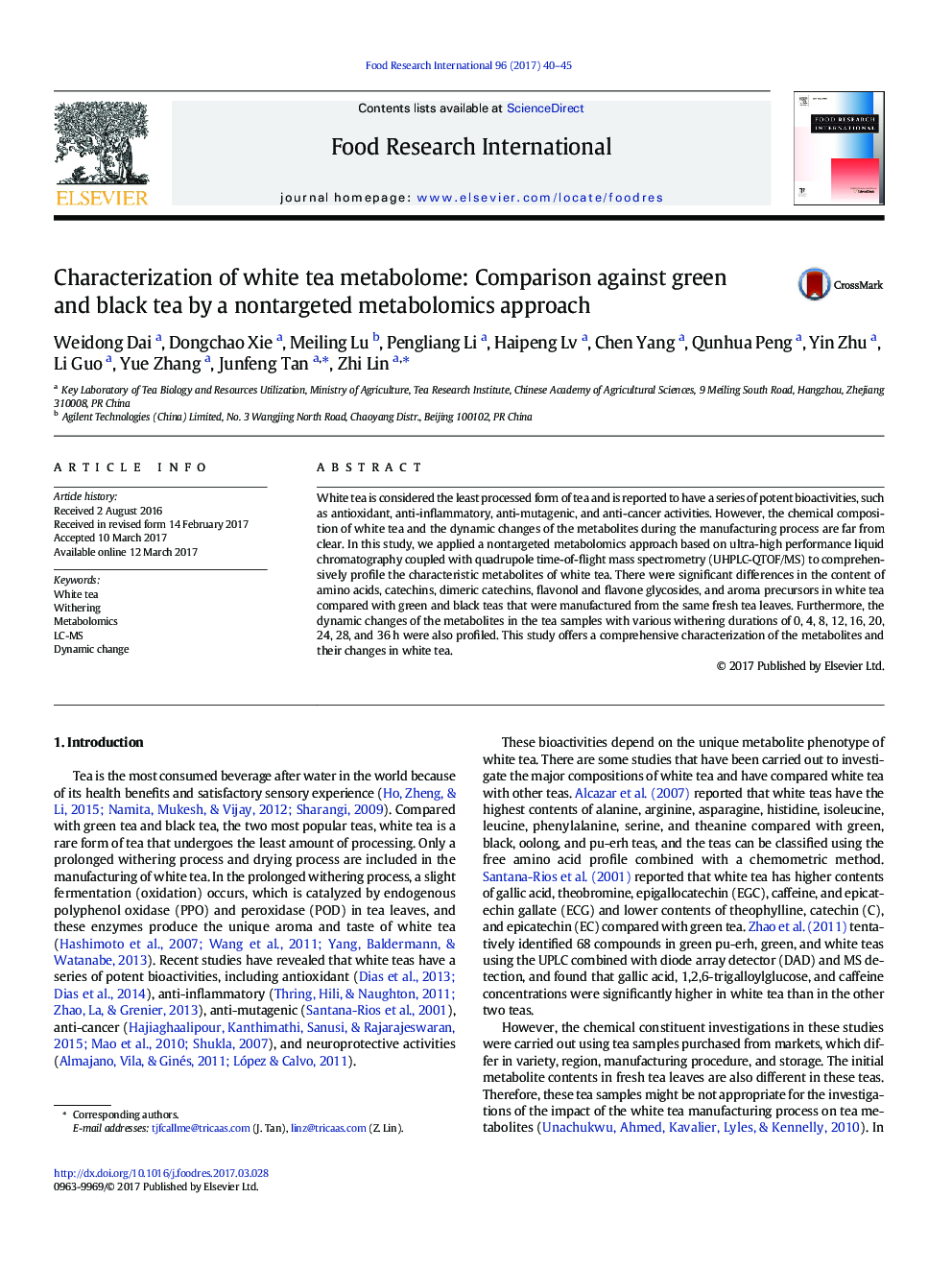| Article ID | Journal | Published Year | Pages | File Type |
|---|---|---|---|---|
| 5768253 | Food Research International | 2017 | 6 Pages |
â¢White, green, and black teas were manufactured from the same fresh tea leaves.â¢The three tea metabolomes were compared by a LC-MS based metabolomics approach.â¢Amino acids, catechins, dimeric catechins, and aroma precursors are the most changeable metabolites.â¢Dynamic changes of metabolites during white tea withering process were profiled.
White tea is considered the least processed form of tea and is reported to have a series of potent bioactivities, such as antioxidant, anti-inflammatory, anti-mutagenic, and anti-cancer activities. However, the chemical composition of white tea and the dynamic changes of the metabolites during the manufacturing process are far from clear. In this study, we applied a nontargeted metabolomics approach based on ultra-high performance liquid chromatography coupled with quadrupole time-of-flight mass spectrometry (UHPLC-QTOF/MS) to comprehensively profile the characteristic metabolites of white tea. There were significant differences in the content of amino acids, catechins, dimeric catechins, flavonol and flavone glycosides, and aroma precursors in white tea compared with green and black teas that were manufactured from the same fresh tea leaves. Furthermore, the dynamic changes of the metabolites in the tea samples with various withering durations of 0, 4, 8, 12, 16, 20, 24, 28, and 36 h were also profiled. This study offers a comprehensive characterization of the metabolites and their changes in white tea.
Graphical abstractDownload high-res image (120KB)Download full-size image
